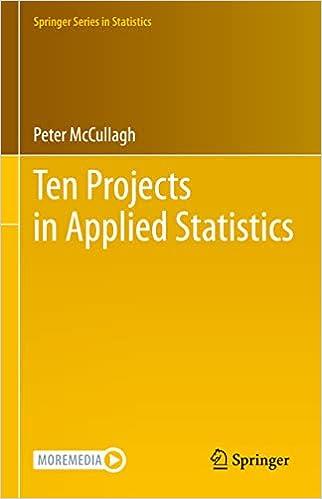Sparse signal detection. Suppose that the observation (Y=X+varepsilon) is the sum of a signal (X) plus independent
Question:
Sparse signal detection. Suppose that the observation \(Y=X+\varepsilon\) is the sum of a signal \(X\) plus independent Gaussian noise \(\varepsilon \sim N(0,1)\). For any signal distribution \(X \sim P_{v}\), the sparsity rate is defined by the integral
\[
ho=\int\left(1-e^{-x^{2} / 2}ight) P_{u}(d x)
\]
Suppose that the signal is distributed according to the Dirac-Cauchy mixture \(P_{v}(d x)=(1-v) \delta_{0}(d x)+v C(d x)\) in which the null atom \(1-v\) is the null-signal rate. Find the sparsity rate corresponding to \(5 \%\) non-zero signals.
Fantastic news! We've Found the answer you've been seeking!
Step by Step Answer:
Related Book For 

Question Posted:





